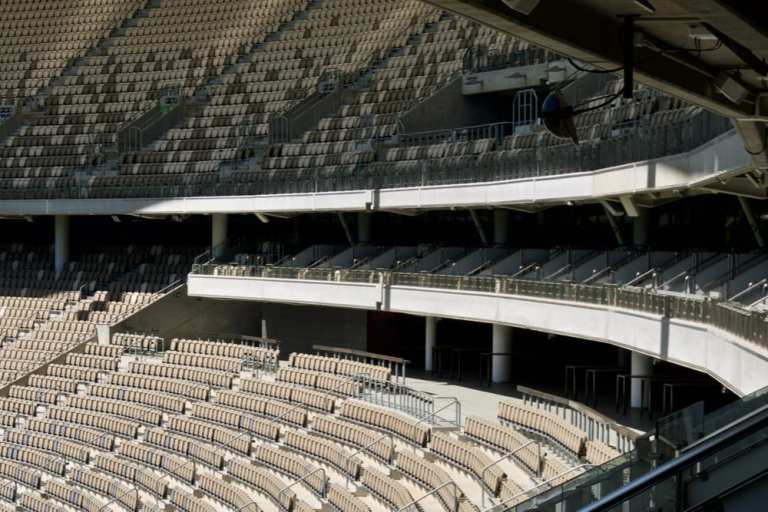
Now if only they could recreate the smell of the hotdogs, the taste of the flat overpriced beer — or pipe in the obnoxious play-by-play patter of the guy behind you.
The pandemic, you know by now, has changed everything — especially events that hinge on crowds, and the energy of crowds, to be whole and authentic. Sporting events come to mind, of course.
The stands may be (mostly) empty but high tech has sought to bring at least some of the experience in place, rendered visually, digitally and audibly.
This past week, as had been seen previously with the NBA, the NFL used Microsoft Teams to stream at least some of the stadium experience to fans at home. The tech giant has done so (and will continue to do so) through a “virtual” gallery of spectators displayed across screens and also across LED screens housed in the stadium, specifically at the end zones.
As reported by CNBC, the latest forays into “virtual” crowds extend a partnership that the NFL has had in place with Microsoft since 2013, where Microsoft Surface hardware is deployed to help run operations.
This time around, Fan Mosaic, as enabled by Microsoft Team Meetings, broadcasts fans onto those LED screens. The fans, in turn, are selected by the teams (designating them as VIPs), adding fan noise to “piped in” crowd noise.
In a way, it’s video conferencing in service of leisure, not business. It’s virtual reality that seeks to replicate the ultimate crowded event, where people feed off of one another’s energy.
“Part of watching a game on TV is seeing fan reaction,” Microsoft’s Jeff Teper, vice president in charge of Teams, told CNBC. “This is a chance to make the games more engaging for that TV audience.”
In its announcement detailing the expanded efforts with the NFL, Microsoft said it “also wanted to help the NFL digitally reimagine touchdown celebrations. This season, it will debut the Bud Light Showtime cam in stadiums at key games to give players a new way to connect with fans after scoring touchdowns.” In the event of touchdowns, players see fans from the Fan Mosaic appear on LED screens installed at each end zone, allowing them to connect and celebrate the moment.
And it is the “celebrating the moment” that becomes a curiosity in this strange time. Public health concerns (or mandates) keep fans from the game, and the stadium empty. Cobbling together at least some of the visuals of fans’ reactions goes at least some way toward fostering a sense of community; social media helps too. But a total recreation is out of the picture, of course.
Back in April, in an interview with Karen Webster, Gil Fried, professor and chair at the University of New Haven’s sport management program, said that now, more than ever, people need escapism — the very type that sports bring. The loss of seats, foot traffic and revenue streams means team owners may have to recalibrate their payrolls, which means that well beyond the challenges of digital sporting events, we may be in for a whole new ballgame.